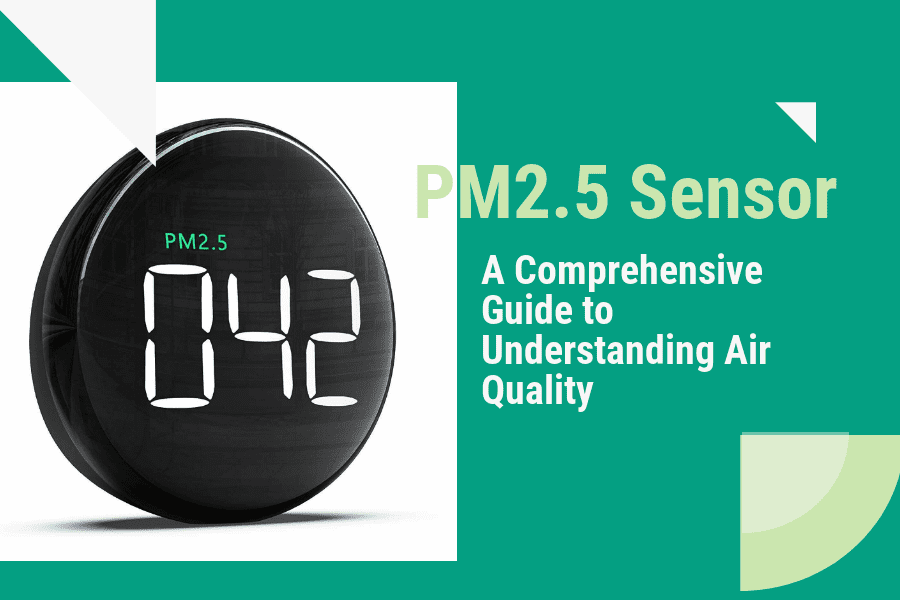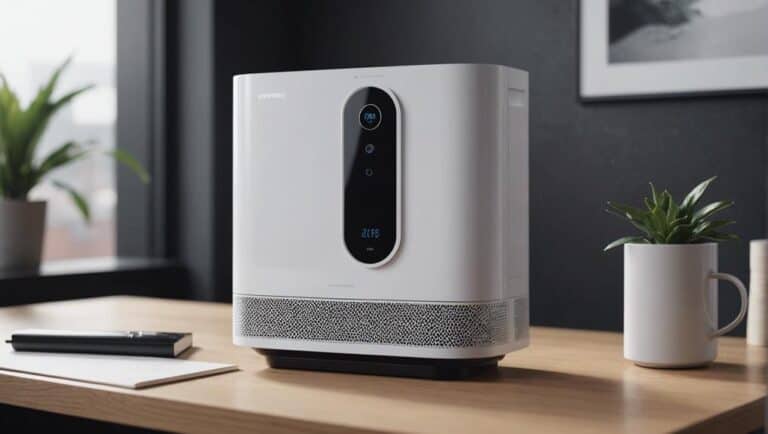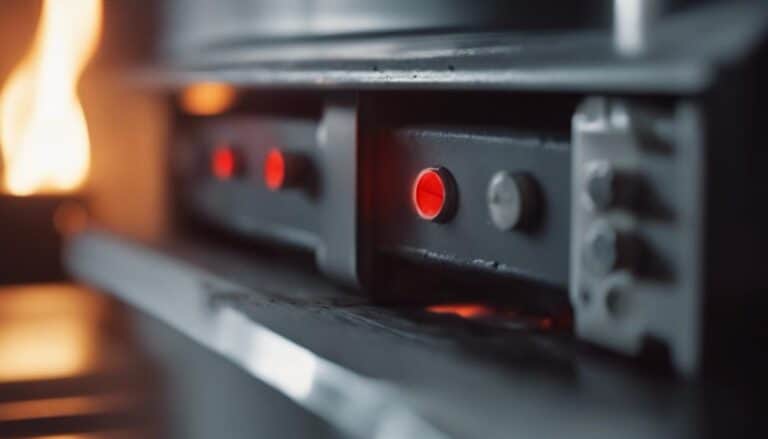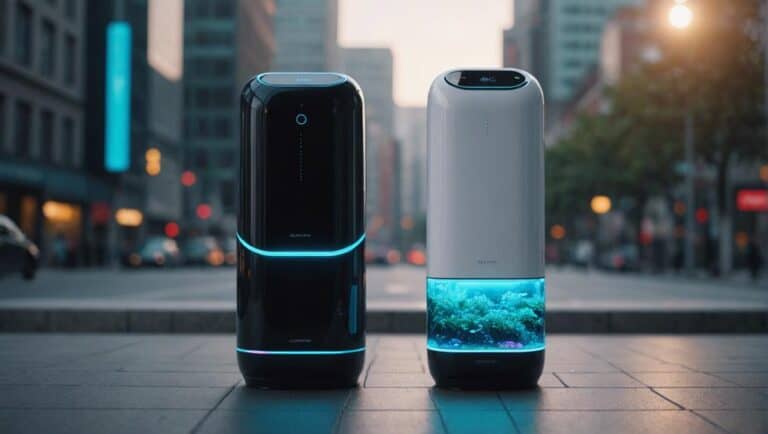PM2.5 Sensor: A Comprehensive Guide to Understanding Air Quality
PM2.5 is a type of air pollutant that can have harmful effects on human health. These tiny particles, which are less than 2.5 micrometers in diameter, can penetrate deep into the lungs and cause respiratory problems, cardiovascular disease, and even cancer. In recent years, there has been growing concern about the levels of PM2.5 in the air, particularly in urban areas where traffic and industrial activity contribute to high levels of pollution.
A PM2.5 sensor is a device that measures the concentration of these particles in the air. These sensors are becoming increasingly popular among individuals and organizations who want to monitor air quality in their local environment. By providing real-time data on PM2.5 levels, these sensors can help people make informed decisions about when to exercise outdoors, when to keep windows closed, and when to wear protective masks.
What is a PM2.5 Sensor?
A PM2.5 sensor is a device that measures the concentration of particulate matter (PM) in the air. Specifically, it measures the concentration of particles that are 2.5 micrometers or smaller in diameter. These particles are considered to be particularly harmful to human health because they can penetrate deep into the lungs and even enter the bloodstream.
PM2.5 sensors work by using a laser or LED light to illuminate particles as they pass through a detection chamber. The sensor then calculates the concentration of particles based on the amount of light that is scattered or absorbed by the particles. Some sensors also include a fan that draws air through the detection chamber to ensure a constant flow of air and accurate readings.
PM2.5 sensors are commonly used in indoor and outdoor air quality monitoring applications. They can be used in homes, schools, offices, and other indoor environments to monitor the air quality and identify potential sources of pollution. They are also used in outdoor air quality monitoring stations to provide real-time data on air pollution levels.
How does a PM2.5 Sensor Work?
A PM2.5 sensor is a device that is designed to measure the concentration of fine particulate matter in the air that is smaller than 2.5 micrometers in diameter. These particles are often referred to as PM2.5 and are considered to be a major air pollutant that can have serious health effects on humans and the environment.
PM2.5 sensors work by using a laser to detect the number and size of particles in the air. The sensor uses a fan to draw air into the device, and the particles in the air are then passed through a laser beam. The laser light scatters off the particles, and the sensor measures the amount of light that is scattered to determine the number and size of particles in the air.
The sensor then uses this information to calculate the concentration of PM2.5 in the air. This data is typically displayed on a digital screen or transmitted wirelessly to a computer or mobile device for further analysis.
PM2.5 sensors are becoming increasingly popular in homes, offices, and public spaces as people become more aware of the health risks associated with air pollution. These sensors can be used to monitor the air quality in real-time and provide valuable information to help people make informed decisions about their health and well-being.
Applications of PM2.5 Sensors
Indoor Air Quality Monitoring
PM2.5 sensors are commonly used for indoor air quality monitoring in homes, offices, and other indoor environments. These sensors can detect the concentration of fine particulate matter in the air, which can be harmful to human health. By monitoring PM2.5 levels, individuals can take steps to improve indoor air quality and reduce their exposure to harmful pollutants.
Indoor air quality can be affected by a variety of factors, including cooking, cleaning, smoking, and the use of certain products. PM2.5 sensors can help individuals identify sources of indoor air pollution and take steps to reduce their exposure. For example, if a sensor detects high levels of PM2.5 during cooking, individuals can take steps to improve ventilation or use a range hood to reduce the concentration of pollutants in the air.
Outdoor Air Quality Monitoring
PM2.5 sensors are also used for outdoor air quality monitoring. These sensors can be used to measure the concentration of fine particulate matter in the air, which can be harmful to human health. By monitoring PM2.5 levels, individuals can take steps to reduce their exposure to harmful pollutants and protect their health.
Outdoor air quality can be affected by a variety of factors, including traffic, industrial activities, and natural sources such as wildfires. PM2.5 sensors can help individuals and communities identify sources of outdoor air pollution and take steps to reduce their exposure. For example, if a sensor detects high levels of PM2.5 near a busy road, individuals can take steps to reduce their exposure by avoiding the area or using a mask to filter the air.
Personal Air Quality Monitoring
PM2.5 sensors can also be used for personal air quality monitoring. These sensors can be worn by individuals to measure their exposure to fine particulate matter in the air. By monitoring PM2.5 levels, individuals can take steps to reduce their exposure to harmful pollutants and protect their health.
Personal air quality monitoring can be particularly useful for individuals who are sensitive to air pollution or who work in environments with high levels of pollutants. By monitoring their exposure to PM2.5, individuals can take steps to reduce their exposure and protect their health.
Types of PM2.5 Sensors
PM2.5 sensors are used to measure the concentration of fine particulate matter in the air. There are different types of PM2.5 sensors available in the market, each with its own set of advantages and disadvantages. In this section, we will discuss the three main types of PM2.5 sensors:
Optical Sensors
Optical sensors use light scattering or absorption to measure the concentration of PM2.5 in the air. These sensors are small, portable, and relatively inexpensive. They are commonly used in indoor air quality monitors and personal air pollution monitors. Optical sensors are easy to use and require little maintenance. However, they are not as accurate as other types of PM2.5 sensors and can be affected by changes in temperature and humidity.
Electrochemical Sensors
Electrochemical sensors use a chemical reaction to measure the concentration of PM2.5 in the air. These sensors are more accurate than optical sensors and can be used in both indoor and outdoor environments. Electrochemical sensors are also relatively inexpensive and easy to use. However, they require regular calibration and can be affected by changes in temperature and humidity.
Beta Attenuation Monitors (BAMs)
Beta Attenuation Monitors (BAMs) use the beta radiation from a radioactive source to measure the concentration of PM2.5 in the air. These sensors are highly accurate and are commonly used by regulatory agencies to monitor air quality. BAMs are expensive and require trained personnel to operate and maintain them. They are not suitable for personal air pollution monitoring or indoor air quality monitoring.
Overall, the choice of PM2.5 sensor depends on the specific application and requirements of the user. Each type of sensor has its own strengths and weaknesses, and users should carefully consider these factors before selecting a sensor.
Factors to Consider When Choosing a PM2.5 Sensor
Accuracy
Accuracy is one of the most important factors to consider when choosing a PM2.5 sensor. The accuracy of a sensor is how closely it measures the actual concentration of PM2.5 in the air. It is important to choose a sensor with a high level of accuracy to ensure that the data collected is reliable and can be used for analysis.
When looking for an accurate PM2.5 sensor, it is important to consider the calibration method used by the sensor. Calibration is the process of adjusting the sensor to ensure that it is measuring correctly. Look for sensors that use a traceable calibration method, such as NIST, to ensure that the sensor is calibrated to a known standard.
Precision
Precision is another important factor to consider when choosing a PM2.5 sensor. Precision is how close the measurements are when the sensor is repeatedly measuring the same concentration of PM2.5. A sensor with high precision will provide consistent results, which is important for long-term monitoring and analysis.
When looking for a precise PM2.5 sensor, it is important to consider the resolution of the sensor. The resolution is the smallest change in concentration that the sensor can detect. Look for sensors with a high resolution to ensure that small changes in PM2.5 concentration can be detected.
Response Time
Response time is the time it takes for the sensor to detect changes in PM2.5 concentration. A sensor with a fast response time will be able to detect changes in PM2.5 concentration quickly, which is important for real-time monitoring and analysis. However, sensors with a fast response time may be more expensive.
When looking for a PM2.5 sensor with a fast response time, it is important to consider the type of sensor used. Optical sensors, such as laser-based sensors, typically have a faster response time than other types of sensors.
Cost
Cost is always a factor to consider when choosing a PM2.5 sensor. The cost of a sensor can vary widely depending on the features and specifications of the sensor. It is important to choose a sensor that fits within your budget, but also meets your needs in terms of accuracy, precision, and response time.
When comparing the cost of different PM2.5 sensors, it is important to consider the total cost of ownership. This includes not only the initial cost of the sensor, but also the cost of maintenance, calibration, and any necessary accessories or software.
Installation and Maintenance of PM2.5 Sensors
Choosing a Location
When installing a PM2.5 sensor, it is important to choose a location that is representative of the air quality in the area. The sensor should be placed away from any sources of pollution, such as busy roads, factories, or construction sites. It should also be located at a height of at least 1.5 meters above the ground to avoid interference from dust and other particles.
Calibration
Before using a PM2.5 sensor, it is important to calibrate it to ensure accurate readings. Calibration involves comparing the sensor’s readings to those obtained from a reference instrument. This should be done periodically, as the sensor’s accuracy may drift over time.
Cleaning and Maintenance
Regular cleaning and maintenance of the PM2.5 sensor is important to ensure accurate readings and prolong its lifespan. The sensor should be cleaned using a soft, dry cloth to remove any dust or debris that may have accumulated on the surface. It is also important to replace the filter periodically, as a clogged filter can affect the sensor’s accuracy.
When performing maintenance on the sensor, it is important to follow the manufacturer’s instructions carefully. This may include replacing parts or recalibrating the sensor. It is also important to store the sensor in a cool, dry place when not in use, to avoid damage from moisture or extreme temperatures.
By following these guidelines for installation and maintenance, you can ensure that your PM2.5 sensor provides accurate and reliable readings of air quality in your area.
Conclusion
PM2.5 sensors are an essential tool for monitoring and controlling air pollution. They provide accurate and reliable data on the concentration of fine particulate matter in the air, which can have serious health effects on humans and the environment.
Through our research, we have found that PM2.5 sensors come in a variety of types and sizes, and can be used for both indoor and outdoor air quality monitoring. They are easy to install and operate, and can be integrated with other smart home or building automation systems for real-time monitoring and control.
It is important to note that while PM2.5 sensors are useful for detecting and measuring air pollution, they are not a substitute for proper ventilation and air filtration systems. It is still important to take steps to reduce pollution at its source, such as reducing emissions from vehicles and industrial processes.
Overall, PM2.5 sensors are an important tool for promoting public health and environmental sustainability. By providing accurate and real-time data on air pollution, they can help individuals and communities make informed decisions about their exposure to harmful pollutants and take steps to reduce their impact on the environment.







One Comment